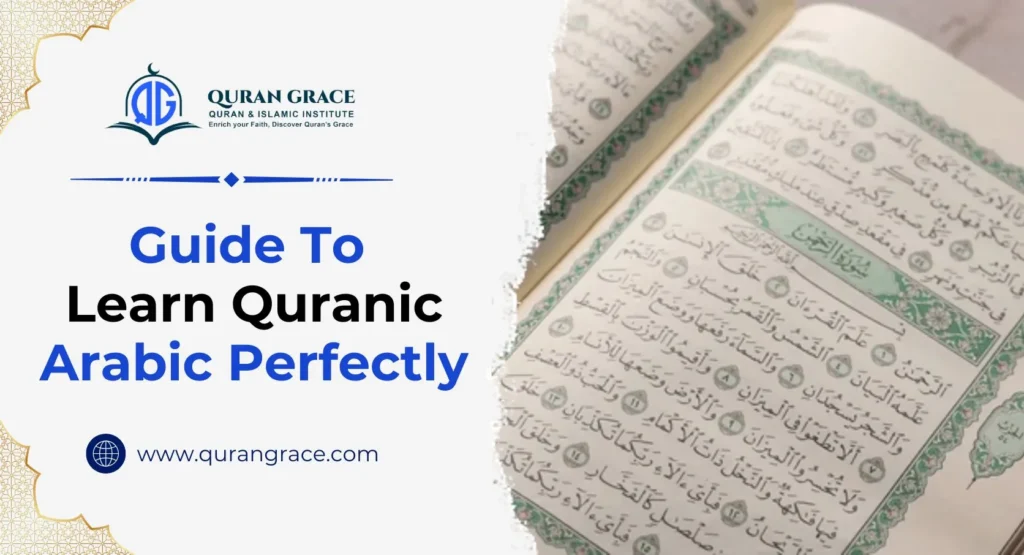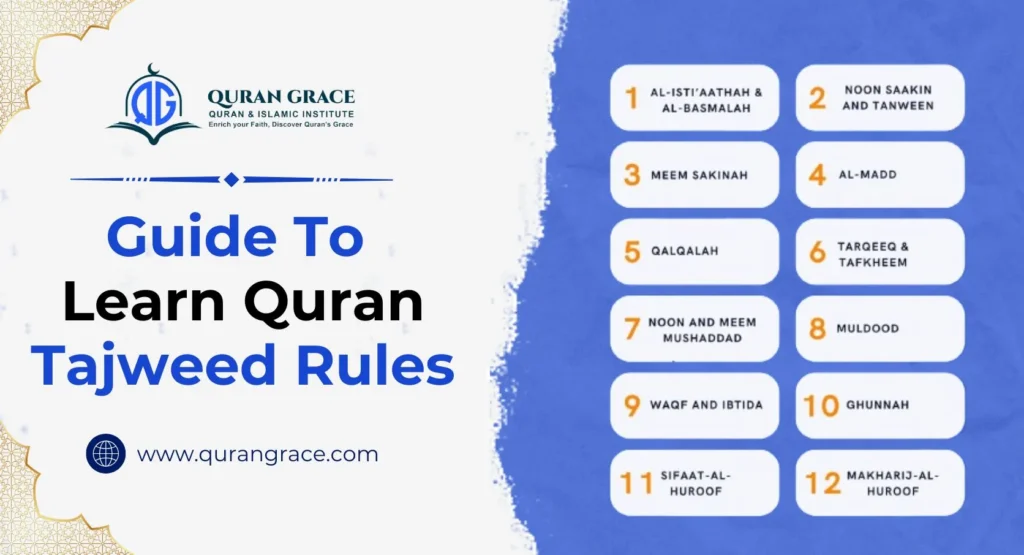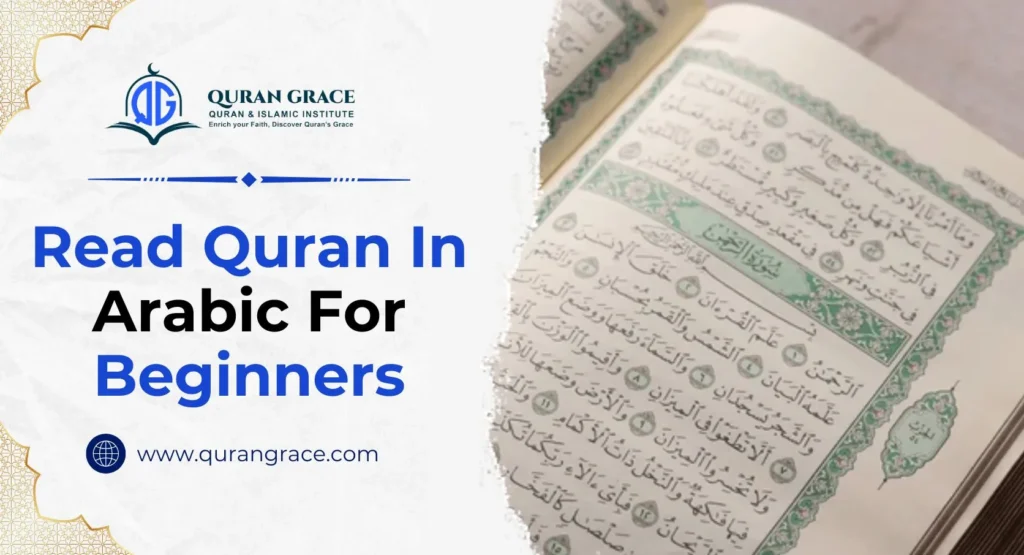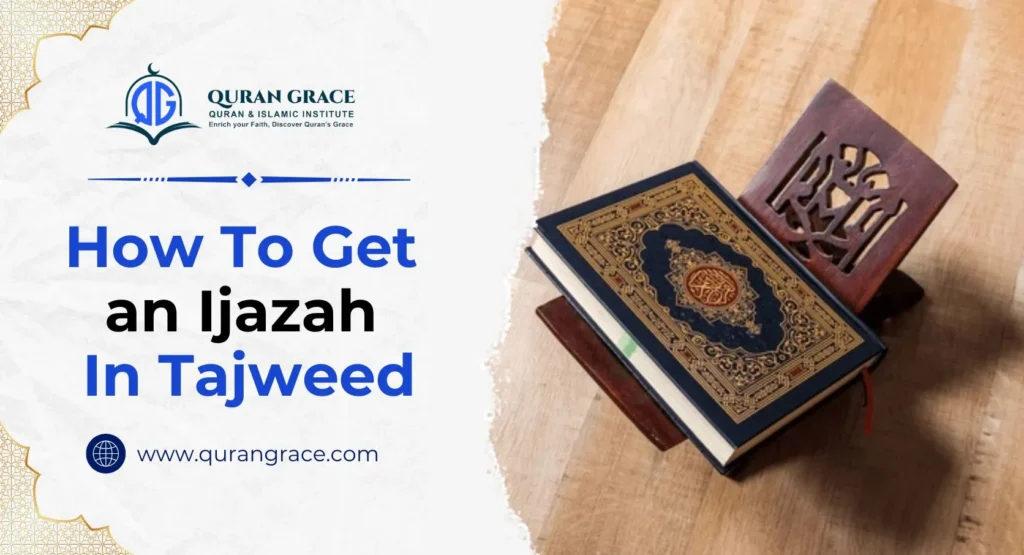Madd Munfasil is a fundamental concept in Tajweed, the art of Quranic recitation. It is important to comprehend the various types of Madd for a precise and melodious recitation of the Quran. Madd Munfasil, commonly known as “separate elongation,” plays a crucial role in the proper articulation of Quranic verses. Mastering this rule is essential for anyone who is studying the Quran. Let’s delve deeper into the details of this important rule.
Table of Contents
ToggleWhat is Madd Munfasil?
Madd Munfasil (مد منفصل), which translates to “separated elongation,” is an important rule in Tajweed. This rule comes into play when a harf al-madd, or letter of elongation, appears at the end of one word and is followed by a hamzah (ء) at the start of the next word. In this context, the elongation and its triggering factor, the hamzah, are found in two distinct words, making it a unique aspect of Arabic pronunciation rules.
The three letters of Madd:
- Alif (ا) with a fatha (ـَ) before it.
- Waw (و) with a damma (ـُ) before it.
- Ya (ي) with a kasra (ـِ) before it.
The hamzah (ء) can appear with any of the short vowels (fathah, dammah, or kasrah).
The Ruling and Duration of Madd Munfasil:
The ruling regarding Madd Munfasil is that it is considered ja’iz (جائز), which translates to “permissible” or “optional.” This ruling provides reciters with the flexibility to determine the length of elongation.
When reciting Madd Munfasil, the elongation can be performed for durations of 2, 4, or 5 counts (harakat). A harakah corresponds to the duration of a single vowel, approximately the time needed to articulate a short syllable.
It is essential to maintain consistency in the chosen elongation during a recitation session. For example, if a reciter opts to elongate for 4 counts on one instance, they should consistently apply the same 4 counts for all other occurrences of Madd Munfasil within that session.
The variation in elongation duration stems from different chains of transmission and recitation styles (riwayat). Among these styles, the recitation of Hafs from Asim is the most widely practiced and allows for elongation of 4 or 5 counts, although it also permits a shorter 2-count elongation.
Examples of Madd Munfasil from the Quran
- With Alif:
- With Waw:
- قَالُوا آمَنَّا (Qalu amanna) – Surah Al-Baqarah, 2:14. The waw at the end of “Qalu” is followed by the hamzah at the beginning of “amanna.”
- With Ya:
- فِي أَنْفُسِكُمْ (Fi anfusikum) – Surah Adh-Dhariyat, 51:21. The ya at the end of “Fi” is followed by the hamzah at the beginning of “anfusikum.”
Tips for Applying Madd Munfasil
-
Listen and imitate the Qaris
To effectively learn the proper application of Madd Munfasil, it is highly beneficial to listen to an experienced reciter. Focus on their techniques for elongating sounds, as this can significantly enhance your understanding and practice of this aspect of recitation.
-
Practice Consistently
Consistent practice plays a crucial role in developing muscle memory. Regular recitation, coupled with a mindful application of the rules of Madd, is highly beneficial for mastering the material.
-
Hire a professional tutor
A qualified egyptian quran teacher plays a crucial role in learning proper Quranic recitation. They offer personalized feedback and can identify and correct mistakes, ensuring that students develop accurate recitation skills. Their expertise is invaluable for mastering the intricacies of Tajweed.
-
Use a Tajweed-Colored Mushaf
Many printed Qurans incorporate a color-coding system designed to emphasize Tajweed rules, which are essential for proper Quranic recitation. One specific rule, the Madd Munfasil, is commonly marked with a small elongated dash or a wavy line placed above the corresponding Madd letter. This visual cue serves as an important reminder for reciters to elongate the sound appropriately during their readings.
Conclusion
By understanding and applying the rules of Madd Munfasil, you not only improve the clarity of your recitation but also enhance its rhythm and melodic flow, matching the tone as perfectly as Egyptians. To learn quran recitation and online Tajweed course, we recommend joining Quran Grace, which offers a free evaluation of your understanding before offering you a suitable course.








